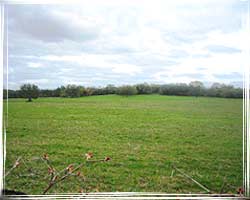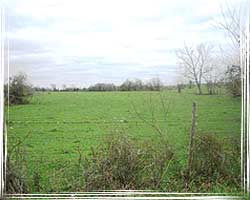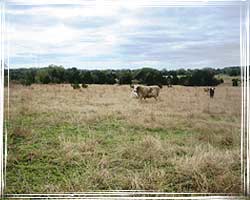Texas Eco-Regions
Blackland Prairieback to Eco-Regions Map
Elevation
Elevation ranges from 300 feet in the southern portion to 800 feet above sea level in the north.
Precipitation
Average rainfall is approximately 35 inches in the western counties to 45 inches in the eastern counties.
Topography
Topography ranges from gently rolling hills to level land. Forested areas are typically restricted to drainages and waterways.
Soils
The region is underlain by Upper Cretaceous marine chalks, limestone, and shale which give rise to the development of the characteristic black, heavy clay soils; along major rivers and tributaries a slightly more sandy soil.
Vegetation Description
The Blackland Prairie is a true prairie grassland community which is dominated by a diverse assortment of perennial and annual grasses. The soil is considered some of the richest soil in the world. Live oaks are the trees that dominate a large part of this eco-region. The northern and central portions of this area are predominately comprised of post oak, blackjack oak, American elm, winged elm, cedar elm, sugarberry, green ash, osage-orange, honey mesquite, and eastern redcedar. In addition to the species listed for the northern and central areas, the southern area is comprised of live oak and Ashe juniper. Pecan, black walnut, black willow, American sycamore, honey locust and bur oak are commonly found in bottomland woodlands throughout this region.
Impacts of Fire
Prior to human settlement, fire and grazing by bison were probably the two most important factors in the overall maintenance of the Blacklands area. Native Americans most likely influenced the area greatly through burning the landscape. Fires were typically very large and would burn until conditions or landforms would contain them. For the most part fires in this eco-region no longer greatly impact vegetation. As grazing land increased over the years and with the addition of urban sprawl, fire no longer is a major factor in the maintenance of the Blackland prairies. However, lack of wildfire has had an effect. Due to fire suppression and cattle grazing, honey mesquite, Ashe juniper, eastern red cedar and other fire intolerant species of woody vegetation are rapidly spreading throughout this region.
Historical Information
The east-central portion of the blackland prairie was once part of a vast tallgrass prairie made up of big bluestem, little bluestem, switchgrass and sideoats and other flora. Early settlers were drawn to this region by the productive soils, gentle topography, and luxuriant native grasslands.




